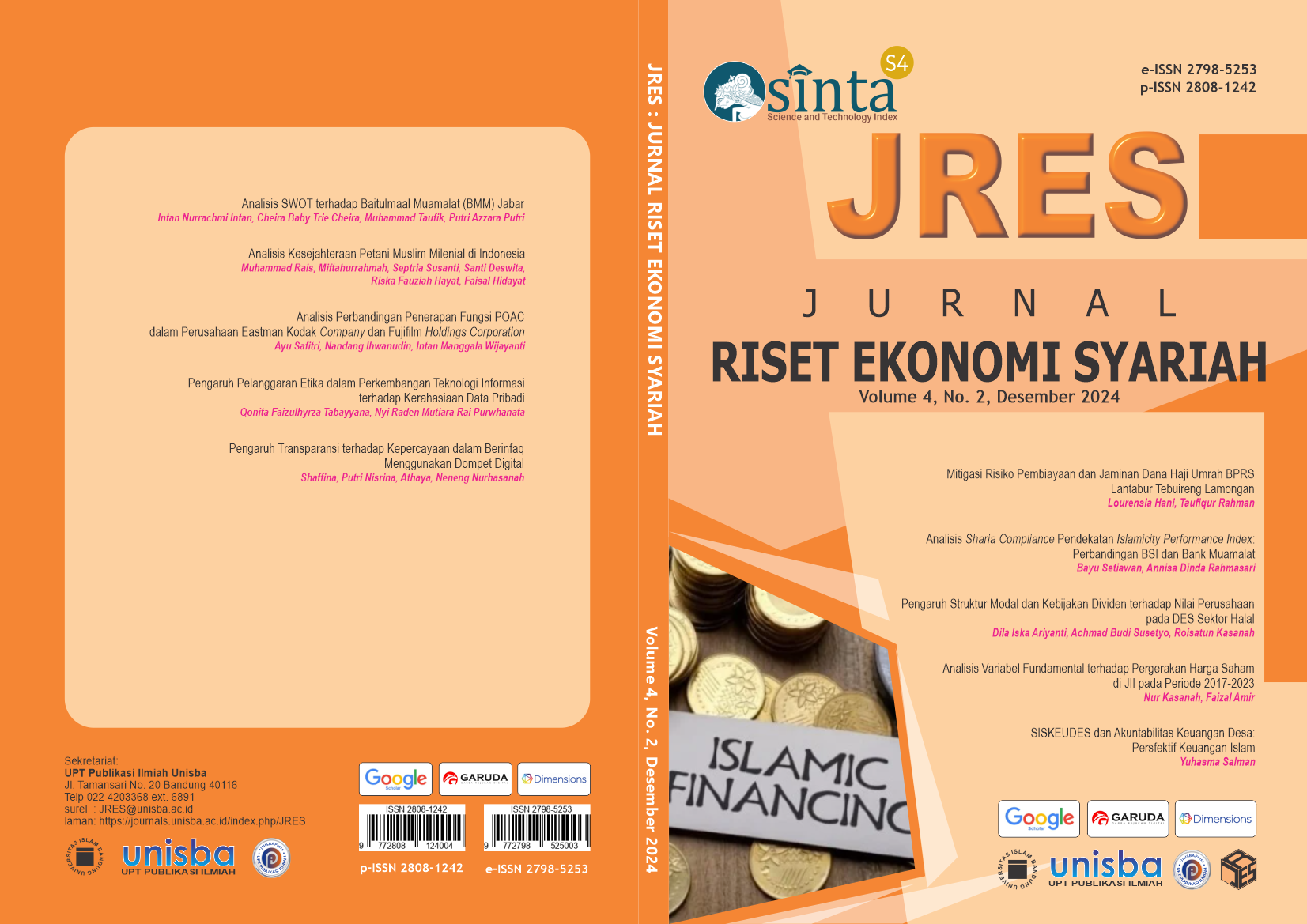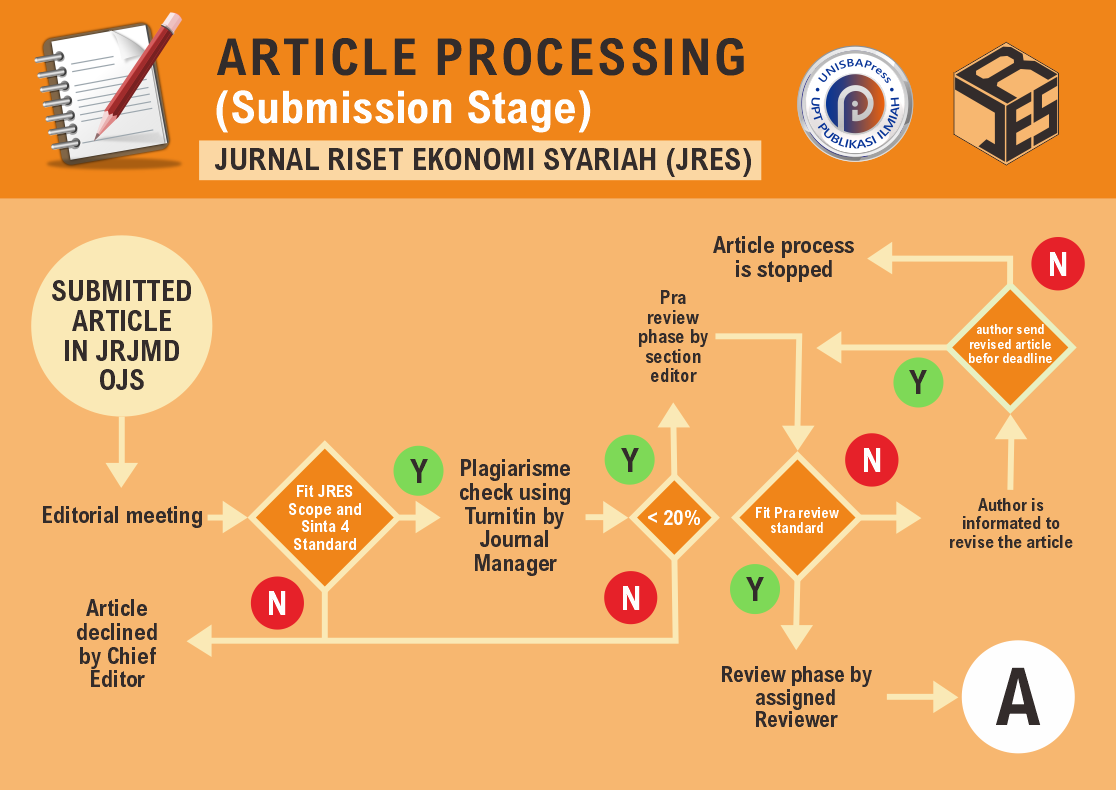Analisis Perbandingan Penerapan Fungsi POAC dalam Perusahaan Eastman Kodak Company dan Fujifilm Holdings Corporation
DOI:
https://doi.org/10.29313/jres.v4i2.5224Keywords:
Fujifilm, Camera, KodakAbstract
Abstrak. Perubahan teknologi dari film ke fotografi digital membawa dampak besar pada industri ini, khususnya bagi Eastman Kodak Company dan Fujifilm Holdings Corporation. Keduanya menghadapi tantangan yang serupa namun menghasilkan hasil yang berbeda. Penelitian ini bertujuan menganalisis penerapan fungsi manajemen POAC (Planning, Organizing, Actuating, Controlling) pada kedua perusahaan tersebut untuk mengidentifikasi faktor keberhasilan atau kegagalan dalam beradaptasi dengan perubahan teknologi dan pasar. Pendekatan yang digunakan adalah kualitatif dengan metode studi kasus, memanfaatkan data sekunder dari laporan tahunan, artikel jurnal, dan buku. Hasil penelitian menunjukkan bahwa Kodak gagal melakukan perencanaan strategis yang adaptif dan terlalu bergantung pada bisnis film tradisional, sehingga lambat merespons perkembangan teknologi digital. Sebaliknya, Fujifilm menerapkan perencanaan yang inklusif, pengorganisasian yang fleksibel, serta inovasi dalam penggerakan dan pengendalian, serta berhasil mendiversifikasi bisnisnya ke sektor kesehatan dan material tinggi. Studi ini menegaskan bahwa penerapan fungsi manajemen POAC yang efektif menjadi kunci keberhasilan dalam menghadapi perubahan teknologi, dengan Fujifilm sebagai contoh sukses dan Kodak sebagai contoh kegagalan manajerial.
Abstract. The technological shift from film to digital photography has had a major impact on the industry, particularly for Eastman Kodak Companyand Fujifilm Holdings Corporation. Both faced similar challenges but produced different results. This study aims to analyze the application of POAC (Planning, Organizing, Actuating, Controlling) management functions in the two companies to identify success or failure factors in adapting to technological and market changes. The approach used is qualitative with a case study method, utilizing secondary data from annual reports, journal articles, and books. The results of the study show that Kodak fails to carry out adaptive strategic Planning and relies too much on the traditional film business, so it is slow to respond to the development of digital technology. In contrast, Fujifilm implemented inclusive Planning, flexible organization, and innovation in movement and control, and successfully diversified its business into the health and high-materials sectors. The study confirms that the effective implementation of POAC management functions is key to success in the face of technological change, with Fujifilm as an example of success and Kodak as an example of managerial failure.
Downloads
References
Akbar, K., Hamdi, H., Kamarudin, L., & Fahruddin, F. (2021). Manajemen POAC pada Masa Pandemi Covid-19 (Studi Kasus BDR di SMP Negeri 2 Praya Barat Daya). Jurnal Kependidikan: Jurnal Hasil Penelitian Dan Kajian Kepustakaan Di Bidang Pendidikan, Pengajaran Dan Pembelajaran, 7(1), 167. https://doi.org/10.33394/jk.v7i1.2959
Bae, J., Bae, H., Kang, S., & Kim, Y. (2004). Automatic Control of Workflow Processes Using ECA Rules. 16(8), 1010–1023.
Benkheddoudja, O. (2022). The Impact Of Firm Innovativeness On Firm Performance : Case Study Of Kodak Company. 52–58.
Curme, H., & Rand, R. N. (1997). Early history of Eastman Kodak Ektachem slides and instrumentation. 1652, 1647–1652.
Fox, E. M. (1993). Eastman Kodak Company v. Image Technical Services, Inc.-Information Failure as Soul or Hook. Antitrust LJ 62, 759.
Ivada, A., & Kusumawardhani, A. (2021). Analysis Business Strategy Housing Development. 2021(4), 509–518.
Kodama, M., & Shibata, T. (2016). Developing Knowledge Convergence through a Boundaries Vision — A Case Study of Fuji fi lm in Japan. 23(4), 274–292. https://doi.org/10.1002/kpm
Lely, M., Ratna, M., Fiqih Zulfikar, F., & Alfandio, F. (2022). Analisis faktor penyebab eksternal dan internal kebangkrutan. Journal of Digital Business and Innovation Management, 1(1), 42–55. https://doi.org/10.1234/jdbim.v1i1.48678
Marno, & Supriyatno, T. (2008). Manajemen dan Kepemimpinan Pendidikan Islam. In Refika Aditama.
Mubarok, F. (2024). Assessing Market Value : A Deep Dive into Jakarta Islamic Index Constituents. Jurnal Riset Ekonomi Syariah(JRES), 4(1), 17.
Pasternak, G. (2015). Taking Snapshots , Living the Picture : The Kodak Company ’ s Making of Photographic Biography. 12(4), 1–14.
Rindiza, I. T. (2021). Perencanaan Komunikasi Fujifilm Indonesia Cabang Yogyakarta Dalam Mengembangkan Brand Community Fujiguys. In Diss. Universitas Atma Jaya Yogyakarta (pp. 1–22).
Salsabila, M., Sulistiani, S. L., & Bayuni, E. M. (2024). Analisis POJK terhadap Mitigasi Risiko dan Penyelesaian Pembiayaan Bermasalah pada P2P Financing Syariah. Jurnal Ekonomi Syariah (JRES), 1–8.
Zamili, E., Manao, A., & Waoma, S. (2021). Pengaruh Penerapan Fungsi-Fungsi Manajemen Terhadap Kinerja Pegawai Di SMA Swasta Kampus Telukdalam. Jurnah Ilmiah Mahasiswa Nias Selatan, 4(1), 157–169.
Downloads
Published
Issue
Section
License
Copyright (c) 2024 Rofik Hidayat

This work is licensed under a Creative Commons Attribution-NonCommercial-ShareAlike 4.0 International License.














